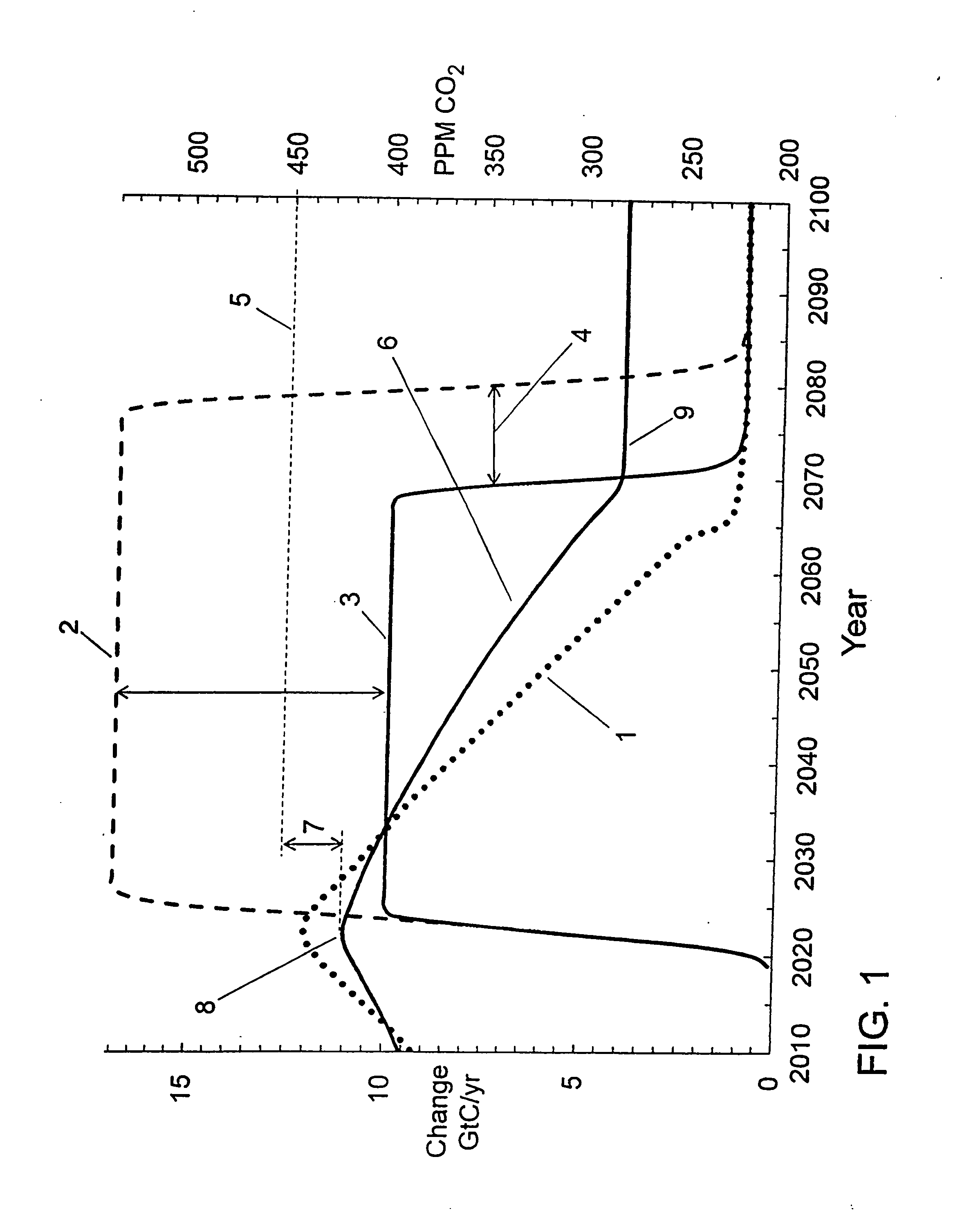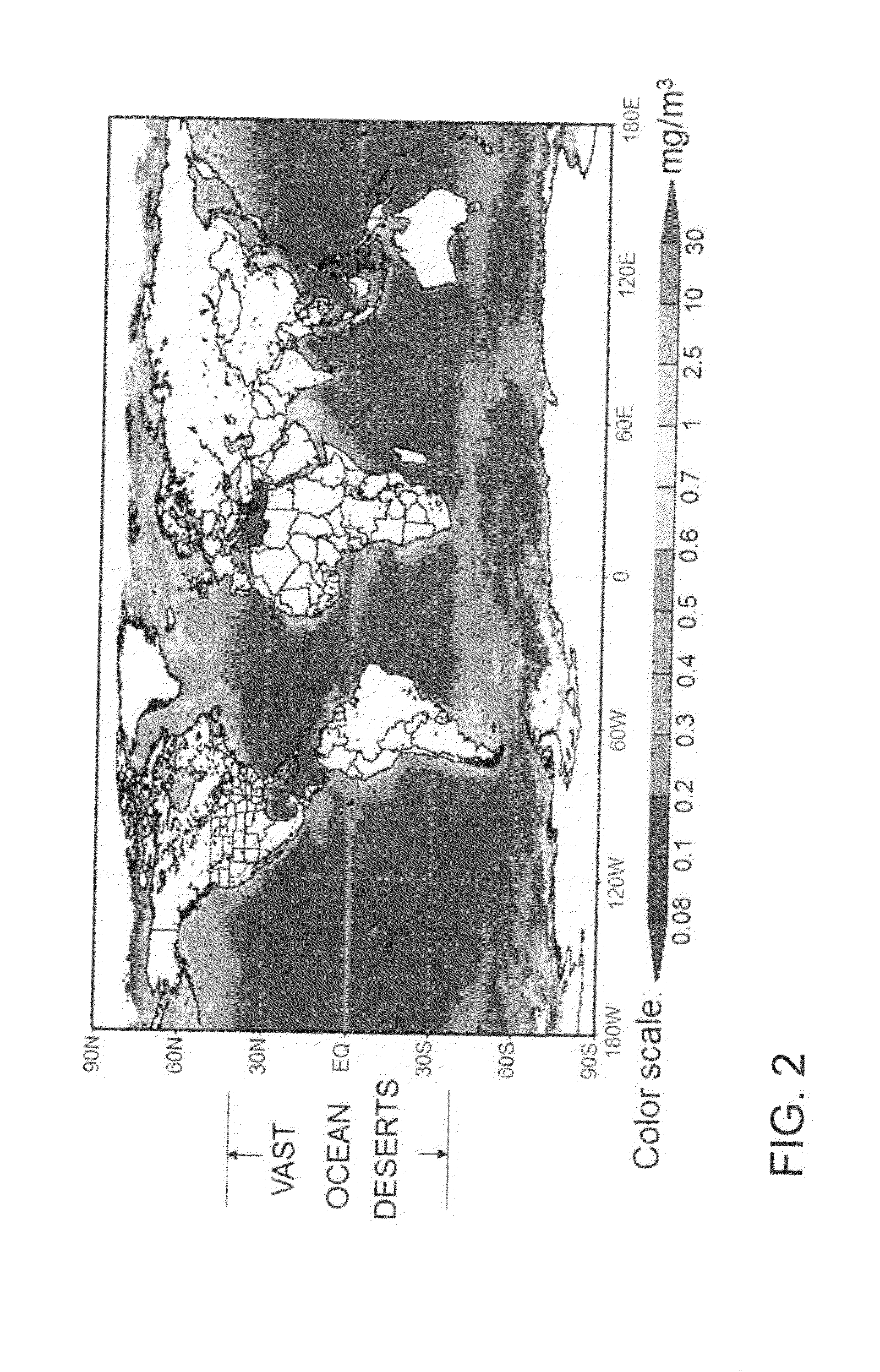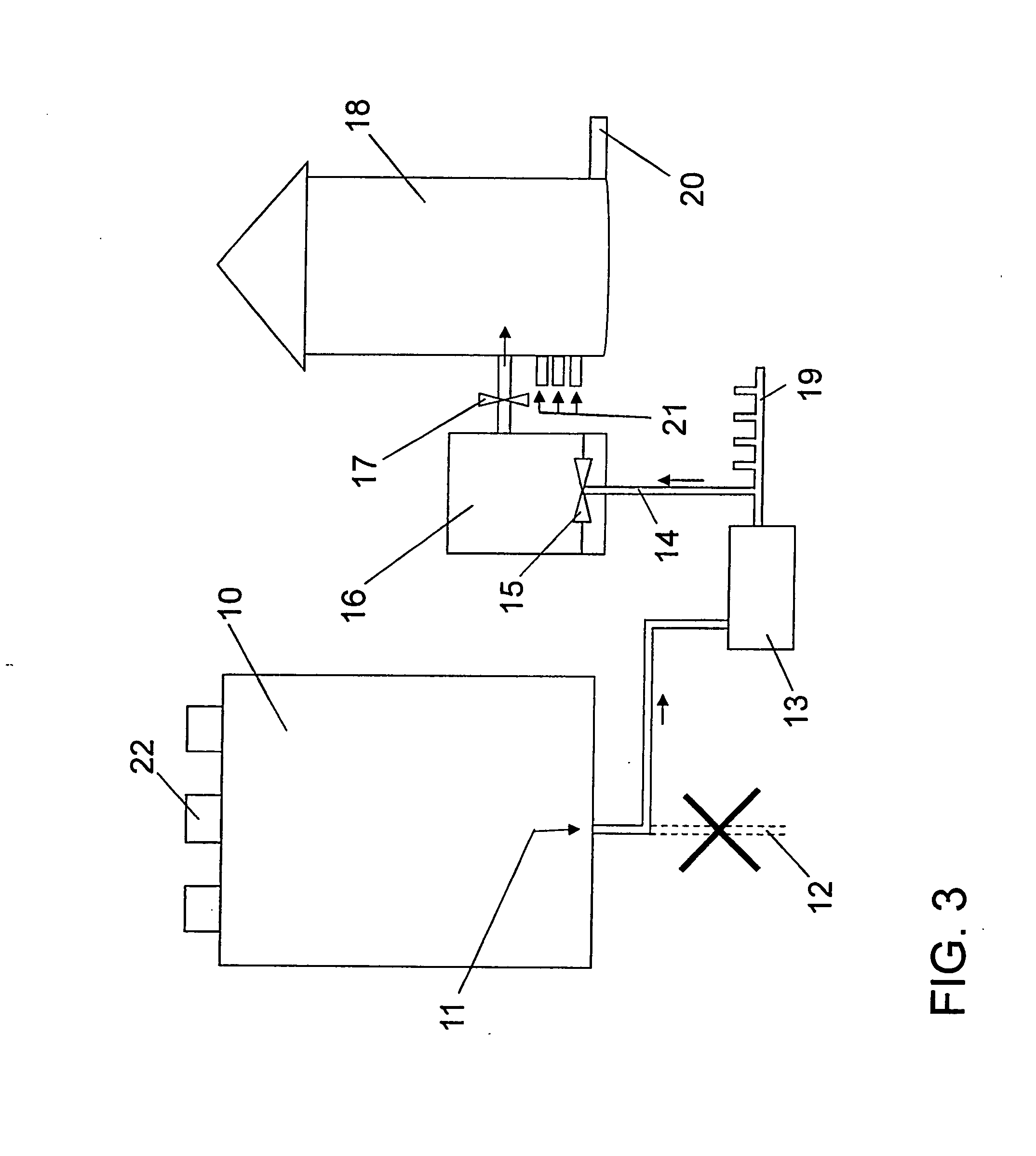All three problems are related to rising atmospheric concentrations of the
greenhouse gas (GHG) carbon dioxide (CO2) produced by fossil-fuel burning,
cement production, and
agriculture.
This summarizes the overall impracticality of prior-art single-stage geo-
engineering systems and their non-viability for meeting FIG. 1 targets.
In reality, the prior-art single-stage systems won't be scalable for preventing a rise in atmospheric CO2 to the 450 ppm twin tipping points for catastrophic warming or
ocean acidification.
They won't even likely be able to significantly
delay the anticipated crossing date (2028) for exceeding those tipping points.
CO2 warming is much bigger (and more urgent) than is generally acknowledged (or understood), and no adequate, affordable solution has yet been offered.
Prior-art geo-
engineering systems are single-stage, don't exhibit capture amplification, and can't deliver anywhere near the required 17 GtC / yr or 1.7 tera-
ton overall CO2 capture and
safe storage capacity.
Even if prior-art systems had the capacity, their costs would exceed humanity's ability and willingness to pay.
However, nature's immense capacities for dealing with excess atmospheric CO2 have yet to be harnessed.
Nature's capture and storage mechanisms are currently working, but not nearly at full capacity.
In the long term, rock-
weathering has sufficient capture capacity, but it's far too slow to solve our immediate, urgent CO2 warming problem and it cannot realistically be accelerated to offset annual anthropogenic CO2 emissions of 9.7-12 GtC / yr in modern times. We'd cross the 450 ppm CO2 tipping point (5) for runaway warming by 2028, long before natural rock-
weathering could make a significant
impact.
This capture and storage requirement remains unfulfilled, and no viable prior-art proposal has yet been identified with prospects for achieving it.
In oceans, most of the
carbonic acid produced by CO2
dissolution dissociates to form
bicarbonate ion (HCO3), but that process liberates
hydrogen ion (Hf) which ultimately lowers the pH of the oceans (e.g. pH 8.33→pH 8.1) and produces damaging
ocean acidification (e.g., pH 8.17—a CO2 related problem) at today's excessive atmospheric CO2 level.
However, this would initially release massive amounts of extra CO2 because this
lime would be first produced by heating vast quantities of limestone mined from the Australian Nullarbor plain (releasing its long-naturally-sequestered CO2), before the resulting
lime could be distributed at sea.
Although c-questrate.com authors claim an offsetting second phase (recapturing more CO2 at sea than was originally released), there would be a significant
hazard (mortal danger to
marine life) of excessive localized
alkalinity during
lime dispersal and mixing at sea, which c-questrate.com didn't adequately address, and we also view the initial release of massive amounts of extra CO2 as being too risky.
However, in our modern interglacial (warm) climate, not much algae actually blooms over the course of a year in the vast majority of global ocean area.
Although laboratory tests were initially promising, other factors prevented success at sea, and none of the prior-art attempts yielded sustainable ocean blooming or significant sustained CO2 capture [Boyd, 2007; Mankin, 1995; Abraham, et. al., 1999; EisenEx, 2000; Tsuda, et. al., 2001, 2004; Barber, et. al., 2002, 2007; Johnson, 2002, 2004; Walter, et. al., 2004; Castellani and Gardiner, 2005; Mehrtens, 2009; Bhattachatya, 2009; and Pielke, Jr, 20
Everything else (e.g., all prior-art man-made systems) will be too small and ineffectual in the face of 12 GtC / yr global emissions (projected by 2023).
Our difficult problem is that we are currently in a warm period where ocean capture of CO2 by accelerated algal blooming lies essentially dormant (see FIG. 2), owing to warm stratified seas with
nutrient upwelling blocked by
thermocline, and not enough time remains to naturally accelerate ocean blooming before the 450 ppm tipping point is reached.
2]. Ocean fertilization appeared promising in a number of the small scale prior-art laboratory tests, but other factors prevented their success at sea, and none of the prior-art attempts yielded large ocean blooms or globally scalable CO2 capt
Even under ideal conditions, the upward-bending non-linear
algal growth curve can't yield rapid blooming rates from such a low starting point.
Even if sufficient
nutrient were available, starting from only 0.1 mg / m3 (
chlorophyll-a measure) of natural algal seed wouldn't produce blooming sufficient to reach a 14 GtC / yr ocean capture target for CO2 by the end of each year.
Prior-art ocean fertilization attempts all dosed
nutrient-only into the seas, and the 0.1 mg / m3 natural seed levels weren't sufficient to support high bloom rates, regardless of nutrient dosing.
Instead, subsequent
photic zone algal blooming would get stalled by persistent optical
opacity after a single initial bloom of natural buoyant strains, and the multiplicity of subsequent blooms required to raise total annual blooming to 14 GtC / yr cannot develop.
With 70-90% of the predators gone owing to excessive whaling and commercial over-
fishing, grazer populations have grown out of control and this makes it difficult to avoid seed algae getting eaten by grazers before it has a chance to bloom anywhere near a 14 GtC / yr target.
Decay, following death of a large
algal bloom, can trigger secondary microbial (bacterial) blooming which consumes dissolved
oxygen, creating an
oxygen depletion zone that can kill
marine life in the vicinity.
This is not so much a preventer of accelerated algal blooming (per se), but it is environmentally unsound and it would likely raise popular and
regulatory agency objections which would likely activate (or lead to) legal and / or legislative intervention to block allowance of further ocean seeding or fertilization which would be required for large-scale ocean blooming to achieve the 14 GtC / yr ocean blooming and CO2 capture target.
No prior-art systems or
system combinations have demonstrated FIG. 1 capacities, CO2 removal performance, or future potential for achieving the FIG. 1 capacities and performance.
In addition, satisfactory porous rock structures for underground SCF-CO2 storage are scarce and difficult to find.
Storage integrity is not guaranteed.
Storage integrity could be breached in a seismic event or upheaval, and stored SCF-CO2 could rapidly decompress and suddenly release to
atmosphere as concentrated CO2 (locally lethal) and creating an abrupt return of the warming
impact from
greenhouse gases (GHG) thought to have been previously removed.
Significant environmental concerns and objections would also arise from pumping SCF-CO2 directly to the ocean floor.
Nuclear energy is an ideal long-term solution [Hansen, 2009, Stone, 2013], but its global expansion is currently experiencing
delay and significant public opinion backlash, notably in the USA, Germany, and Japan.
 Login to View More
Login to View More 


